
kscarbel
-
Posts
1,114 -
Joined
-
Last visited
-
Days Won
8
Content Type
Profiles
Forums
Gallery
Events
Blogs
BMT Wiki
Collections
Store
Posts posted by kscarbel
-
-
February 25, 2013 / Detroit News Washington Bureau
Washington — GM wants to pay its CEO $11.1 million in total compensation this year — an increase of more than 20% over 2012 - and offer raises to most of its highest paid executives, according to a document turned over to Congress.GM, which received a $49.5 billion bailout in 2008 and 2009, must get approval for the pay packages for its top 25 executives from the Treasury Department, as a condition of its government bailout.
GM is proposing raises for 18 of its top 25 executives for 2013, with each of those making at least $1.8 million.
CEO Dan Akerson didn't get a raise last year, but received a $9 million pay package, including a $1.7 million cash salary. He makes far less than the CEOs of Ford Motor Co., Chrysler Group LLC and Volkswagen AG, all of whom earned more than $20 million last year.
In a 2011 interview, Akerson confirmed he gave up "more than" $100 million in 2010 to run GM when he left Carlyle Group.
GM disclosed its proposal to the House Oversight and Government Reform Committee, which is holding a hearing on executive pay on Tuesday on companies that got large bailouts.
In 2012, the CEOs of three companies that received large government bailouts — GM, Ally Financial and AIG, didn't receive raises.
GM is proposing to pay about $82 million to its highest 25 employees in total compensation — over the $65 million it paid them in 2012.
The pay restrictions were imposed by Congress in the midst of an outcry in 2009 over high pay and some firms that received large government bailouts. GM must live with the restrictions until Treasury completes its exit of its remaining 19 percent stake, which the government says will happen by March 2014.
Taxpayers stand to lose about $12 million on the $49.5 billion GM bailout at current trading prices.
Christy Romero, the special inspector general overseeing the $700 billion Troubled Asset Relief Program, will testify before the House panel, as will the Treasury's acting pay czar, Patricia Geoghegan.
The House Oversight and Government Reform Committee's panel on economic growth, job creation and regulatory affairs is examining the pay of executives from firms that received large government bailouts in 2008 and 2009.
Last month, Romero criticized the Treasury for approving "excessive" pay raises at GM, Ally Financial Inc. and American International Group Inc.
Executives from the firms will not testify on Tuesday, but have defended the pay packages as appropriate.
The report was critical of Geoghegan, the Treasury's special master overseeing executive pay at companies that got very large bailouts.
In the coming months, Geoghegan will have to approve pay packages for the top 25 executives at GM and Ally for 2013. The committee will seek "her reaction to the report as well as her efforts to ensure that these problems are corrected as (her office) prepares pay package determinations for executives in these companies moving forward."
Cash salaries of $450,000 or more were approved for 94 percent of the top 25 employees each at AIG, GM and Ally.
"While taxpayers struggle to overcome the recent financial crisis and look to the U.S. government to put a lid on compensation for executives of firms whose missteps nearly crippled the U.S. financial system, the U.S. Department of the Treasury continues to allow excessive executive pay," the report said.
The executives at GM, Ally and AIG "continue to rake in Treasury-approved multimillion-dollar pay packages that often exceed guidelines" previously announced, the report said.
AIG repaid its government bailout in December and is no longer subject to the pay restrictions. Initially seven companies — including Chrysler Group LLC, Chrysler Financial, Citigroup Inc. and Bank of America — were covered by the restrictions.
Geoghegan agreed to shift more pay away from longer-term incentive pay.
She removed long-term restricted stock for senior executives, including the CEOs of AIG, GM and Ally.
In total, she removed long-term restricted stock from 24 of the 34 employees' pay packages and, for all but one of the 24 employees, replaced it with stock salary, as requested by the companies.
In total, she approved pay packages worth $5 million or more for 23 percent of the top 25 employees at AIG, GM, and Ally — nine at AIG, three at GM and four at Ally.
In 2012, the Treasury approved all 18 pay raises, totaling $6.2 million, which were requested by the companies. Nine of those raises went to GM executives.
Geoghegan said in the letter that she has "limited excessive compensation while at the same time keeping compensation at levels that enable" the companies "to remain competitive."
Treasury noted that average cash pay was cut by more than 90 percent over the pay received before the bailouts.
It agreed to shift compensation to stock salary, which is earned immediately, from restricted stock that vests over time when an "executive is very senior and may retire in the next few years."Treasury approved raises at GM of 15 percent to 23 percent without any further detail or analysis for four employees "on the basis that they were among the individuals that GM's CEO most relied on, and they had received significant promotions or increased job responsibilities," the audit said.
The audit said that for one GM employee who received a cash salary of $600,000 in 2011, Treasury approved an additional $50,000 in cash in 2012. -
On 2/25/2013 at 6:33 PM, 607t1173 said:
I've bought several DM400's and one R400 with Scania engines and we always replaced the no horse power Scania engines with 237 Maxidyne engines backed by 8LL transmissions to compensate for the low ratio rears,these dumptrucks would only run 48 MPH. At one time the Scania powered Macks sold for about 60% of the value of a pedigreed Mack. At auction, it was difficult to sell what otherwise were good selling dumptrucks, because they were Scania powered.
The Scania DS8 (Mack ENDT475, ET477, E4-210) was a turbocharged 6-cylinder 7.8-liter (475 cu.in.) engine. When spec'd for the application it was intended, it performed superbly.
Morgan Millwork ran several hundred Scania-powered Mack R-487P box trucks on the east coast and was thrilled with their reliability and fuel economy.
However, whenever the 7.8-liter Mack-Scania engine was spec'd to get the sell price down in an application that actually needed the larger 11-liter (672 cu.in.) 237 Maxidyne, naturally like any overworked engine, it didn't meet expectations. I recall a municipal-owned 6x4 MB front-end loader garbage truck that blew up every 2 years. That was to be expected (and that truck should have never been built).
-
Scania has become one of the best heavy truckmakers in the world, and arguably superior to Volvo in every way. Here are a few shots of the company's recent offerings.
The Mack-Scania relationship, both acknowledged and otherwise, was very in-depth for years.
I test drove vocational 308hp Scania chassis and found them competitive with the Mack DMs we sold at the time with EM6-250, -275 and -300 engines.
In the R and T highway models, the performance of the 341hp engine was comparable to the Mack E6-350 2vh.
Today's Scania 9.3L, 11.7L and 12.7L inline-6 engines, and 16.4L V-8s (520, 580, 720hp), are all cutting edge.
Cummins has a joint venture with Scania producing advanced high pressure fuel systems (Cummins-Scania XPI Manufacturing LLP).
Scania is present in every global market today, except North America. They discontinued the conventional cab T-series in 2005, and now only build cabovers (the global market preference).
-
 1
1
-
-
In 1985, Scania entered North America with an impressive truck line-up. The effort failed more due to an arguably flawed market launch strategy than the product itself. Scania’s plan was to first penetrate only the Northeast U.S., and then grow outwards throughout the rest of the country.
Scania felt their trucks, designed for the global market’s higher GCW’s, were better suited for the eastern U.S. where trucks were more heavily spec’d. Scania at that time had not engineered lightened models for the weight sensitive U.S. “west coast” market.
At its peak in the U.S. market, Scania had 17 dealers in the northeast and central part of the country.
The low COE “P” cab was designed for the MC/MR applications, while the high COE “R” cab and conventional “T” cab were for the long distance on-highway market. Features like air ventilation filters, unheard of back then on U.S. trucks, were standard equipment.
In Scania speak, the earlier trucks were “2-series” (2nd generation) Scania trucks. The newer 3-series appeared in the 1987-88 time frame.
An example of the model designation breakdown is:
R112M
R - cab type (high COE cab)
11 – engine size (liters)
2 – series (generation)
M – Chassis class - medium (spec’d for operation on surfaced and well-maintained road)
Most were equipped with Scania’s own 11-liter engine, rated at 308 horsepower DSC11(06) and 341 horsepower DSC11(03). There was some criticism about the lack of a 13-liter engine for long-distance hauling, but actually 350hp was the mainstream rating at that time so the Scania 341hp engine was competitive.
Note: Scania’s 14.19 liter DSC14 V-8 of the time (and by no coincidence the same displacement as the Mack ENDT866), was available up to 500 horsepower and at least one example was sold in the U.S. market (pictured below pulling for Watkins) with an extended length sleeper cab.
U.S. market Scania’s typically had a fully synchronized Scania GR871 10-speed transmission which was a pleasure to shift.
The North American Scania customers quickly developed a strong loyalty for these trucks and praised them for their fuel economy.
On June 18, 1992, Scania U.S.A. Inc. announced it would discontinue the importation of heavy trucks effective December 31, 1992.
The last customer-ordered Scania was delivered to a U.S. customer in 1992 (which was actually a newer 3-series P113HL)
If Mack was to be acquired by a Swedish truckmaker, it should have been Scania. Mack Trucks had a very successful decades-long relationship with Scania going back to April 10th, 1949.
Scania continues to provide after-sales support in the U.S. market via its industrial and marine engine unit. (http://www.scaniausa.com)
.
-
 2
2
-
-
Transport Topics / 2/22/2013
Navistar International’s military vehicle division will install specially designed armored cabs on trucks that will be used by Afghan Security Forces.
Under the $23 million contract, Navistar will replace the commercial cabs on the medium-tactical vehicles with the armored units. The armor will protect occupants from ballistic and blast threats.These and other upgrades will help improve survivability during route clearance missions with mine roller applications.
The U.S. Army submitted the order. The work will be done at the Navistar Defense facility in West Point, Miss. Deliveries are scheduled to begin in April.
Since 2004, Navistar has provided nearly 9,000 MTVs to Afghan forces. There are another 14,000 Navistar MTVs in service with military units around the world, Navistar said. -
I toured the Pete factory in Denton this past fall and the Paccar engine is not selling well. About 9 out of 10 coming down the line had a Cummins in it. Also, they paint everything on the frame, air line, electrical, components including the airbags. I thought the attention to detail and finish product was below average. Pete and KW is just like Volvo and Mack. the new cab is for both trucks and most all frame components now say Paccar on them as they are shared by both trucks. They still make the Pete fuel tanks right on site though!!
Here is a picture of my big Pete 390 with the Peterbilt model..........
I toured Denton last fall and was terribly impressed. Their cab painting system is state-of-the-art. I was pleased to see a U.S. truck plant that is so efficient. I noted a 50/50 mix of MX13s and Cummins power. The DAF-sourced MX13 will gain acceptance over time.
I don't care at all for the frontal appearance of the new Peterbilt 579 and the Kenworth T680. I don't mind the new cab, which was due. But personally, I feel the front ends with the droopy nose syndrome looks terrible.
-
FleetOwner / Feb 20, 2013
http://fleetowner.com/equipment/kenworth-turns-90
Kenworth Truck Co. is celebrating 90 years in business in 2013 and will be hosting a number of events throughout the year to mark the occasion. (The company said it will release details on these as they come closer.)
Founded in 1923 by Harry W. Kent and Edgar K. Worthington, the company built its legacy on building the right truck for each customer’s application, and “build that truck to last.”
That first year, the small Seattle truck manufacturer produced 78 six-cylinder, gasoline-powered trucks.
The company was the first to install diesel engines as standard equipment, it said, in 1933. It also noted that it sold the first sleeper cab in 1936.
Along the company has produced more than 900,000 trucks and achieved many milestones. Among them was the Kenworth T600A, which it said was one of the first truly aerodynamic Class 8 trucks, in 1985. A year later, the Kenworth T800 was introduced and is widely recognized for serving productively in applications such as dump truck, mixer, logger, and extreme heavy haul. The milestone 250,000th T800 was produced and celebrated last year.At the 2012 Mid-America Trucking Show, Kenworth pushed its aerodynamics envelop again with the introduction of the T680.
“Over the past 90 years, Kenworth has played an essential role in the development of trucks that are more fuel efficient, productive and economical to operate,” said Gary Moore, Kenworth’s general manager and PACCAR vice president. “It’s the foundation that began when Harry Kent and Edgar Worthington incorporated the Gersix Motor Company as ‘Kenworth’ in 1923, and delivering trucks that provide exceptional performance continues today.
Kenworth’s claim is that it makes the World’s Best Trucks. While some might argue that point, 90 years of building trucks is a pretty good yardstick to have on your side of the argument.
http://fleetowner.com/blog/heres-90-years-and-many-more-kenworth
-
Trailer/Body Builders / Feb 22, 2013
Navistar, Inc. has completed its acquisition of E-Z Pack Manufacturing and is now operating the business.
The E-Z Pack product line includes the Hercules front loader, Goliath and Apollo rear loaders, and the Hercules Automated Side Loader.
E-Z Pack operations will remain chassis-agnostic and will continue to build and mount refuse truck bodies on all chassis by all original equipment manufacturers. Navistar will also build integrated E-Z Pack refuse bodies on International brand commercial truck chassis. Manufacturing of E-Z Pack bodies will remain at the company's facility in Cynthiana, Ky.
Jim Rogers will continue in his role as Vice President of Sales and Marketing.
The E-Z Pack parts division is in a transition process under the new Navistar ownership. UpTime Parts, a wholly owned subsidiary of Navistar, will be leading this part of the business with focus on supporting E-Z Pack customers.
-
Just what IS Mack Australia? Are they too not operating under the same Volvo direction??
Mack Australia has always been given leeway to meet the local demand. Much of the current "down under" product range was established during the 1990s under Mack Trucks' watch (to their credit). Volvo has come along and, as in the US market, incorporated the Volvo chassis, engines and I-Shift.
-
Given the popularity of short-nosed day cab tractors for regional LTL and local delivery, it’s a mystery why the Mack Metro-Liner tractor isn’t offered in America. We see the equivalent short hood Volvo VNM daycab on a daily basis. Or is the reason because Volvo Group doesn’t want their Mack brand to steal market share from the one Volvo model that has any meaningful sales numbers?
While the Pinnacle has a 117.3” (2,979mm) BBC, the Metro-Liner has a 105.1” (2,670mm) BBC, superior to the Volvo VNM’s 113” (2,870mm) BBC for enhanced maneuverability in around town delivery and on the job site.
Both trucks use the Volvo VN series frame (rebadged as Mack “Advantage”). However, while the 113” BBC Volvo VNM daycab is available with the Volvo D11 (MP7) and D13 (MP8), the 105” BBC Metro-Liner is only offered with the Cummins ISL. Certainly the Metro-Liner could also be fitted with the Volvo D11 as the VNM is, or at the very least a Volvo D9 (Mack MP6?).
Volvo made a haphazard attempt at selling the vocational version of the Metro-Liner in America years ago, but it was such a poorly planned execution that most people don’t know. With the success of “baby 8s” in the vocational market and the need for such a truck to meet municipal bids (the mismatched medium Granite isn’t selling), once again one wonders why the Metro-Liner hasn’t been launched into the U.S. market with the same vigor as the Pinnacle and Granite.http://www.macktrucks.com.au/assets/mack/Australia/specifications/metroLiner_distribution.pdf
-
i drove our superliner a few days while my CL was down for a new clutch and i had alotof gawkers and compliments on how mack never should have stopped making the superlinerand they were the best looking trucks ever made. they are deffinately a modern classic. but today i got back into my CL and realized how much better it drives and the bigger cab is much more comfortable but theres something about a superliner that makes you feel proud to drive it. I have to ask kscarbel why he is bragging the australian superliner but runs down the us titan ? iits basicly the same truck differant name.
My friend, I'm simply saying that the U.S. product line-up has a void since the Super-Liner was terminated in the U.S. market. The Titan compares with the RW700 for severe service operations, but there is blank place where the higher volume on-highway RW600 once stood. Mack Australia understood this, and created a lighter version of the Titan resulting in the 3rd generation Super-Liner. I queston why it is not sold here.
I applaud Mack Australia for seeing beyond Mack U.S.'s shortsightedness and, on there own accord, finding a way to creat a new Super-Liner to meet that long time market niche.
As for running down the U.S. market Titan, I have indeed stated that I don't care for the pimp car styling they gave it (excessive chrome everywhere), as compared to the more professional looking Australian market Titan. For this matter, I'm merely expressing my opinion. A little chrome in the right places is tasteful, but excessive use of chrome everywhere is tacky.
-
Bein' a mutt ain't so bad when most of the competition is mutts... Navistar is a disaster, Daimler don't get it, and Paccar would still be another assembled truck if DAF hadn't gifted them an engine.
I agree with most of your thoughts as well. However I wouldn't word it as such that DAF gifted Paccar an engine. Rather, Paccar brilliantly seized the moment to buy DAF for a very attractive price, and another reason being the package would give Paccar the chance to have their own engine range. What with the Swedes using Volvo engines in Macks, the Germans using Mercedes-Benz engines in Freightliner and Western Star product, and Navistar going with their own license-produced MAN D20 and D26 engines, Paccar realized the trend and made a smart move to enhance itself long-term engine-wise while at the same time making itself the first U.S. truckmaker since Mack Trucks in the 1970s to become a genuine global player..
-
The automatic only for the 685hp?
No, the Volvo I-Shift (rebadged as Mack mDrive) can be spec'd with both the 600 and 685 horsepower ratings of the Volvo D16 (rebadged as Mack MP10)
-
- Popular Post
- Popular Post
New Super-Liners are being assembled every day. But you can’t buy one.
The U.S. market had the Hayward-produced RWL/RWS Super-Liner from 1977-1983, and the Macungie-produced RWI600/700 Superliner II (utilizing the advanced Ultra-Liner chassis) from 1984 thru 1993 (the last Super-Liner going to Yaworski Trucking).
However the legendary Super-Liner’s story didn’t end there for those “down under’. Mack Trucks Australia introduced the third generation Super-Liner in 1996 and it’s been a hot seller ever since.
Volvo would like U.S. customers to be satisfied with a Pinnacle, but one look tells you the Aussie Super-Liner is in a whole other class above.
Once again, note the impressive chassis packaging, fuel tank mounting and European style rear fender arrangement. Also, note how the raised cab mounting allows for a sloped hood resulting in enhanced visibility.
http://www.macktrucks.com.au/assets/mack/Australia/specifications/Superliner_MP10.pdf
-
 3
3
-
No, you can't order a Trident. Yes, it's a spectactular lightweight 13-liter tractor (up to 535hp), but you're not supposed to know about it, lest you would ask questions. With stunning good looks and impressive performance, why indeed do the Aussies get the Trident all to themselves?
Think of the Trident as a lightweight Super-Liner (Yes, the Super-Liner is alive and well, but you can't order that either. Volvo knows what's best for you, and they say no Tridents or Super-Liners for the Americans).
Introduced in 1996, the Trident offers superb visibility, low curb weight, an impressive power-to-weight ratio, great maneuverability and once again, stunning good looks. Think of it as a modern day U.S. market Value-Liner that's available in both axle-back and axle-forward configurations.
Note the impressive chassis packaging, fuel tank mounting and European style rear fender arrangement.
http://www.macktrucks.com.au/assets/mack/Australia/specifications/trident_af.pdf
http://www.macktrucks.com.au/assets/mack/Australia/specifications/trident_ab.pdf
-
- Popular Post
-
- Popular Post
The U.S. market Mack Value-Liner with its distinctive grille and slightly shorter hood (than the normal R model) was a sharp looking truck indeed. But the altogether different Value-Liner "down under" with its dual headlights and rounded nose was equally impressive.
I'll never understand why the superior fuel tanks and European style rear fender arrangement used in Australia wasn't offered in the U.S.market.
-
 2
2
-
 4
4
-
After the Iranian army publicly displayed Mercedes-Benz trucks converted into mobile rocket launchers, the German Economics Ministry in April 2008 banned the export of "trucks with three or more axles and a gross vehicle weight over 44,000 lbs to Iran (and Syria).
Understanding the need to be politically correct, Daimler banned vehicle exports altogether to Iran in April 2010 (much to Volvo’s satisfaction).I like the way Volvo, with a large U.S. footprint, attempts to cover themselves with the U.S. government by stating, “We note that no U.S. entities or U.S. persons have been involved in the Volvo Group’s previous sales to Iran in violation of any sanctions regimes.” It's like saying, "we're not at fault because we know how to and did legally play both sides of the court."
Despite the escalating nuclear threat, Volvo steamed full speed ahead in Iran. Such low ethics and values speak for themselves. Do you really want to support this foreign company which has supported the growth of a nuclear Iran (a scary thought for all Americans), and buy their Mack-branded Volvo trucks? Think about it long and hard.
Interestingly, Volvo's Iran partner Saipa is also the distributor for China's Dongfeng truck brand, whom Volvo just bought a 45% minority interest in (As Volvo can tell you in the case of Iran Saipa, you can always plead some degree of ignorance with a minority share if the deal goes politically sensitive). If you've long wanted to invest in Iran and China but couldn't find the ideal investment vehicle, you could have been buying Volvo stock (OTC symbol VOLVY).
-
Why has pulling out of Iran been a question for Volvo? It's something they should have done long ago without any second thoughts.
“as far as we are aware”, our Iranian distributor is not an entity controlled by the Iranian regime. “It was our understanding" the government dept. IDRO was only a minority shareholder. Yeah, right. They knew for years, but looked the other way.
Iran only represents a minute portion of Volvo's business? Then why do a significant portion of heavy trucks in Iran carry the Volvo nameplate? Certainly, many are second-hand trucks from Western Europe. Volvo had profited significantly in truck and parts sales (and worked hard to keep that off the U.S. government's radar).
The more you read, the dirtier it gets.
_________________________________
In a letter sent to AB Volvo President and CEO Olof Persson, UANI CEO and U.S. Ambassador to the United Nations Mark D. Wallace wrote:
Volvo subsidiaries Volvo Trucks and Renault Trucks are partnered with the Iranian entity Saipa Diesel, a subsidiary of the Industrial Development and Renovation Organization of Iran ("IDRO").As you may know, IDRO has been sanctioned by the U.S. and EU for its proliferation activities and ties to the Islamic Revolutionary Guard Corps ("IRGC").
Nevertheless, as part of its partnership with Volvo, Saipa Diesel manufactured some 2,366 Volvo FH-series and 632 Renault Midlum trucks in 2010 alone.In addition, Renault Truck's website details ongoing plans for Saipa Diesel to produce 1,800 Renault trucks annually.
UANI is also concerned that Volvo's business with IDRO-affiliated entities has resulted in the transfer of dual-use technologies to the Iranian regime. For example, the Volvo Trucks website, states that Volvo has "contributed significantly with investments in tools and equipment" to its Iranian partners.Moreover, evidence of the regime's misuse of Volvo equipment and technology by Iranian military and security forces has been widely documented. The enclosed photograph of a Volvo FH12-420 transporting Iranian MIM-23 surface-to-air missiles during the 2011 Sacred Defense Parade is clear evidence.
In addition, UANI is concerned by the fact that Volvo subsidiary Volvo Construction Equipment ("VCE") has partnered with Parsian Pishro Sanat to provide heavy construction and mining machinery to Iran. UANI's concern is heightened by Iran's ongoing attempts to evade monitoring of its nuclear activities by constructing heavily fortified and clandestine nuclear facilities such as the Fordow facility outside the city of Qom.Furthermore, UANI is troubled by the activities of Volvo Penta in Iran. Volvo Penta produces a number of sensitive products for the marine propulsion industry, including gas turbines for naval vessels, and lists multiple offices and dealers in Iran. Volvo Penta's Iran business is particularly troubling given that Iran’s naval forces have been reported to utilize vessels outfitted with Volvo Penta's marine diesel engines (The U.S. Navy sends Volvo their regards).
______________________________________
AEI – Global Business in Iran Database
Since the fall of Iran, Volvo has sold 40,000 trucks. In 2000, Volvo signed a new agreement with Saipa aimed at manufacturing 1,500 trucks in Iran a year. Sales have totaled 4,000 to 5,000 trucks a year. Volvo also owns a 30 percent stake in Saipa’s Zamyad factory, located near Tehran.1. "Volvo Trucks Signs a New Agreement in Iran", Business Wire, 23 March 2001, available at http://www.encyclopedia.com/doc/1G1-72075017.html.
2. "Volvo Trucks Iran", Volvo, accessed 26 January 2010, available at http://www.volvo.com/trucks/iran-market/en-ir/aboutus/volvo_in_Iran/volv....
-
Volvo Finds Exit Ramp from Iran Market
February 13, 2013 / The Wall Street Journal
Volvo Group has left the Iranian market. A company spokesman confirmed the authenticity of a letter sent to a U.S. pressure group this week saying it stopped sales of any new trucks in Iran in March 2012, and made a decision in January to stop business with all companies in the country.The question of pulling out of Iran has been an issue under discussion for several years, said Kina Wileke, Volvo’s head of media relations. Concerns about the Iranian regime led Volvo to pull out, she added.
United Against Nuclear Iran, the U.S. pressure group, sent a letter to Volvo in December calling for Volvo to leave the market, accusing it, among other things, of supplying the trucks used by the Iranian government to transport missiles.“We applaud Volvo AB for this decision,” said Nathan Carleton, a spokesman for the group, in an email. “Iran’s automotive sector serves as a massive source of revenue for the regime, and is integral to Iranian military operations…The situation is now changing, as seven prominent automakers have pulled out of Iran within the past year.”
The letter, dated Feb. 12 and signed by Eva Persson, executive vice president of legal and compliance for Volvo, takes issue with the allegations the group made in December, and offered clarification on “statements which we do not believe to be accurate.”
Persson said in the letter that Volvo has done business in Iran since 1934, but it represents a minute portion of the company’s global operations. Due to the decision in March 2012 to limit its business to fulfilling existing contracts, sales to Iran made up less than 0.1% of total company turnover that year, the letter said.
“We note that no U.S. entities or U.S. persons have been involved in the Volvo Group’s previous sales to Iran in violation of any sanctions regimes,” the letter said.Persson said in the letter that Volvo provided commercial trucks to Iran through two subsidiaries, Volvo Trucks and Renault Trucks.
They were delivered as SKD kits to Volvo’s importing distributor Saipa Diesel Co., which Perrson said in the letter isn’t an entity under sanctions, nor is it “as far as we are aware” a subsidiary or controlled by the Industrial Development and Renovation Organization of Iran, or IDRO, which is on a U.S. blacklist.
“It is our understanding that IDRO is only a minority shareholder in one of Saipa Diesel Co.’s minority shareholders, Saipa Car Manufacturing Co.,” the letter said.In order for Saipa to assemble the SKD kits and be able to service and maintain the trucks, Volvo provided tools and know-how in the same way it has in other countries, the letter said.
“No dual-use technology is or has been transferred to Saipa Diesel Co. as a result of the tools or know-how provided to it,” the letter said.It also detailed how Volvo’s construction equipment division sold excavators, wheel loaders and other construction equipment, and another division sold Volvo industrial engines, to an independent importer. But that importer isn’t subject to asset freezes under U.S. or European Union regulations, and the products were not barred under trade control laws, the letter said.
-
-
Navistar could shed its RV business
February 15, 2013 / Successful Dealer
Navistar is continuing on its quest to reevaluate all non-core assets of its business.
Navistar spokesman Steve Schrier says the company has received and entertained offers for its Monoco, R-Vison and Holiday Rambler product lines.“There have been unsolicited offers in the past that we have rejected,” he told the newspaper. “Now we’re in the formal process. We’re looking at formal offers. We’ve not accepted any offers at this time.”
Navistar bought the former Monaco Coach Corporation out of bankruptcy in 2009 and rebranded it Navistar RV last year.
With profits and sales shrinking across most of its product suite, Navistar announced a profitability initiative in September that included the reevaluation of the company’s business model, with emphasis on non-core operations.
Earlier this week, the company announced the sale of its stake in Mahindra Navistar Automotives Ltd (MNAL) and Mahindra Navistar Engines Pvt Ltd (MNEPL).
Schrier said Navistar would not discuss which of its business segments were profitable, but added the motorhome industry was “nowhere near its peak. I think it peaked in 2005 and 2006. It’s a fraction of what it was.”
Since the peak, the workforce at its Elkhart County RV operations has dwindled from 1,500 to about 600.
-
Navistar liquidates position in Mahindra partnership
February 12, 2013 / Successful Dealer
Navistar International Corporation announced Tuesday that Mahindra & Mahindra Ltd. has completed the purchase of Navistar Group’s stake in Mahindra Navistar Automotives Ltd (MNAL) and Mahindra Navistar Engines Pvt Ltd (MNEPL).Mahindra takes sole ownership of the operations and will continue to sell MNAL and MNEPL products.
“Mahindra remains committed to growing its presence in the Indian commercial vehicle industry with Mahindra’s Truck and Engine businesses continuing to play a critical role in helping us achieve this goal,” said Dr. Pawan Goenka, President of Automotive and Farm Equipment Sectors for Mahindra & Mahindra Ltd.
“Mahindra has been a valuable partner these last seven years and they are well equipped to move the MNAL and MNEPL businesses forward as the Indian market continues to develop,” said Troy Clarke, president and chief operating officer, Navistar. “We thank Mahindra for their collaboration and appreciate their support in our decision to redirect our resources to other near-term opportunities for Navistar.”
Navistar announced in December intention to exit the joint ventures as part of its “Drive to Deliver” turnaround strategy, which is focused on strengthening its North American core businesses and pursuing near-term initiatives to improve the company’s return on invested capital performance.
The agreement allows Navistar to source components from India while Mahindra continues to provide engineering to Navistar. The Navistar group will continue to support M&M through license agreements and extend necessary support to MNAL and MNEPL for the purposes of business continuity.
-
In a mixer application where the S440 bogie (fabricated axles) are not holding up, you can upgrade to cast axles (ref. S441 bogie).


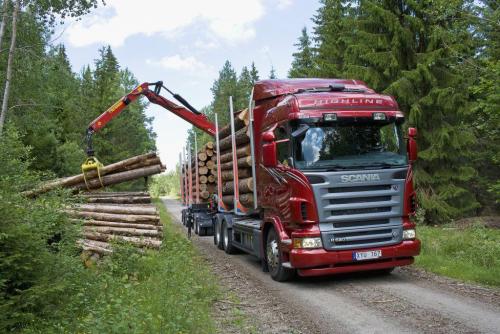
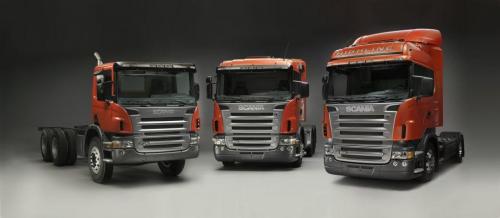
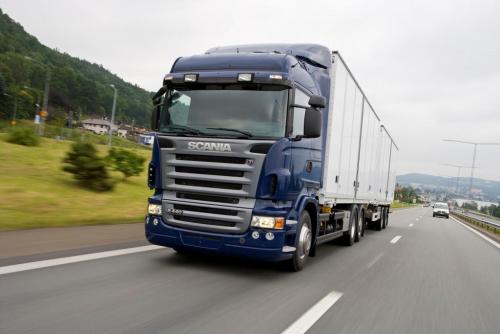
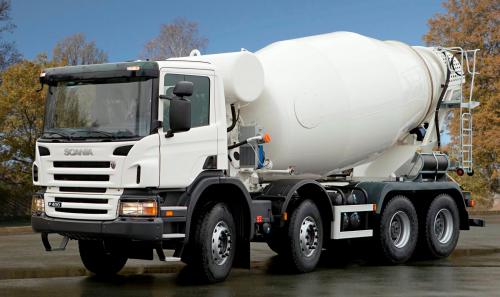
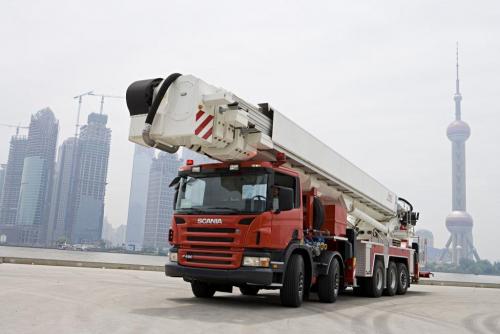
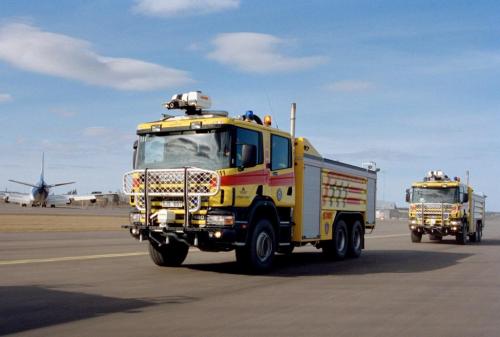
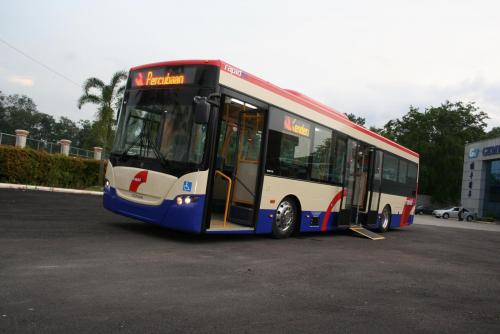
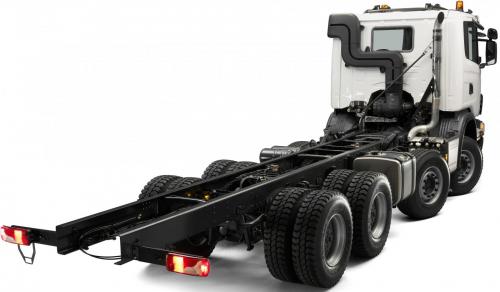
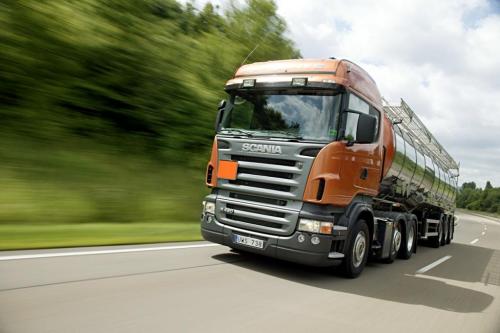
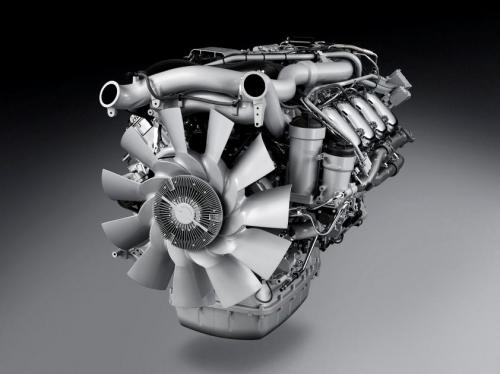
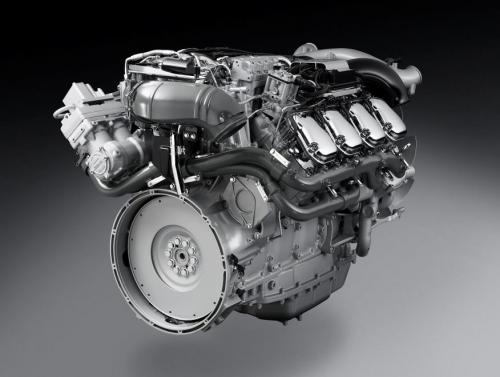
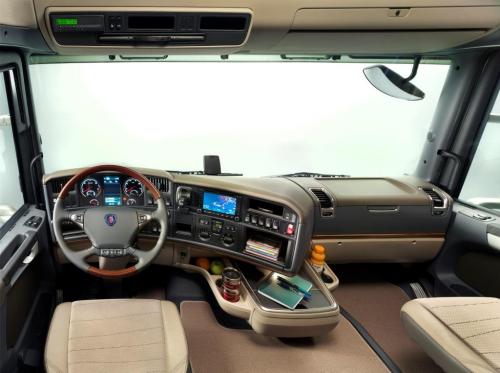
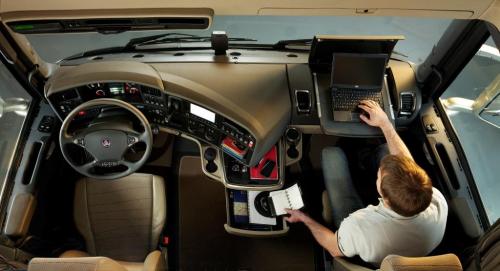
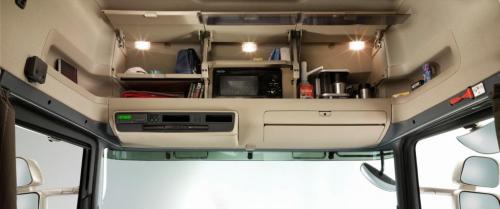
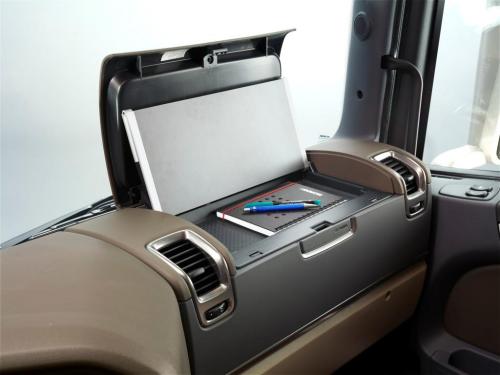
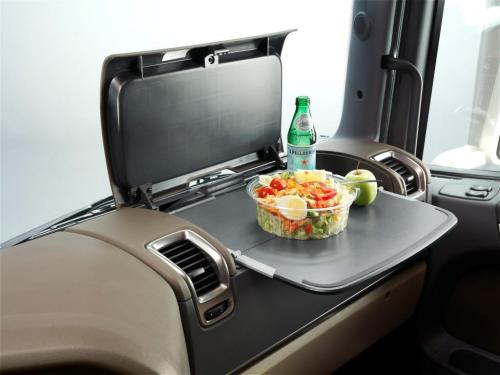
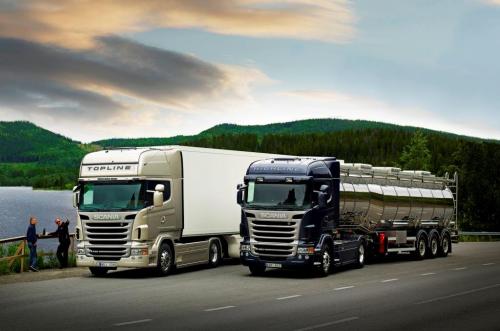
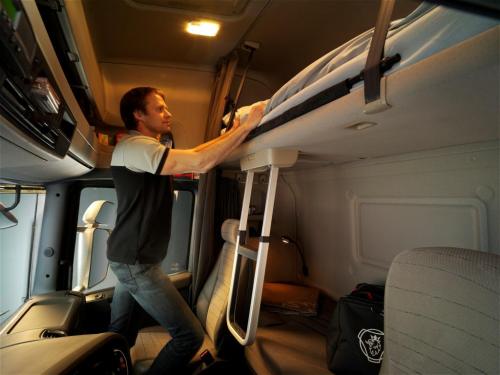
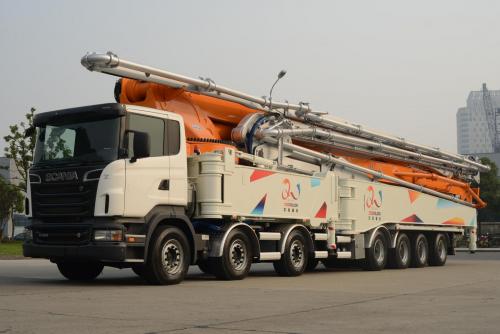
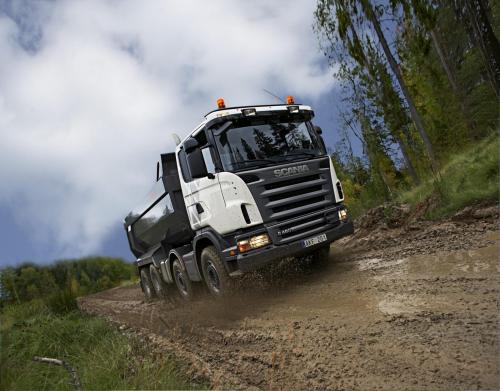
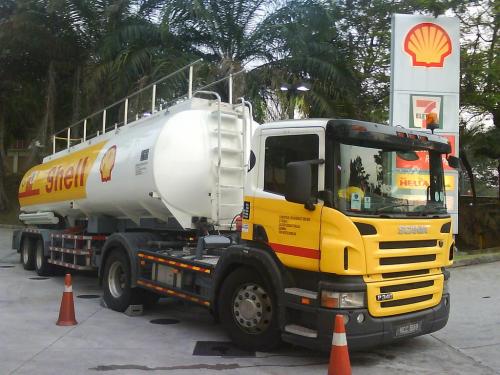
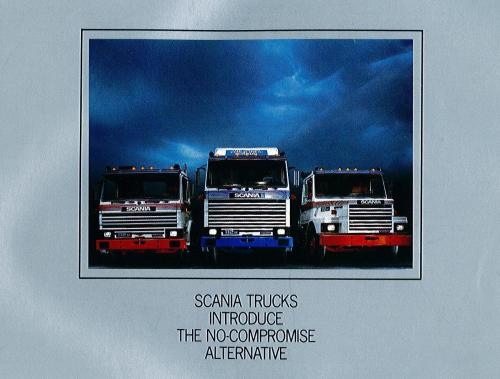
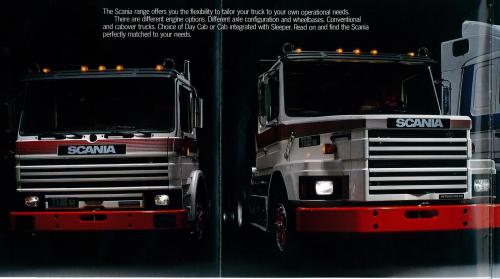
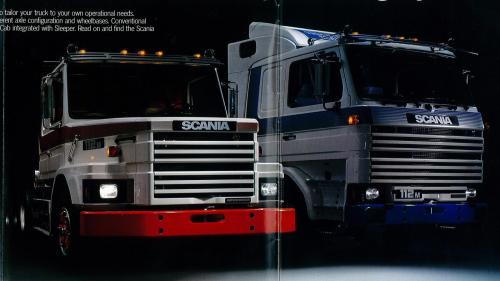
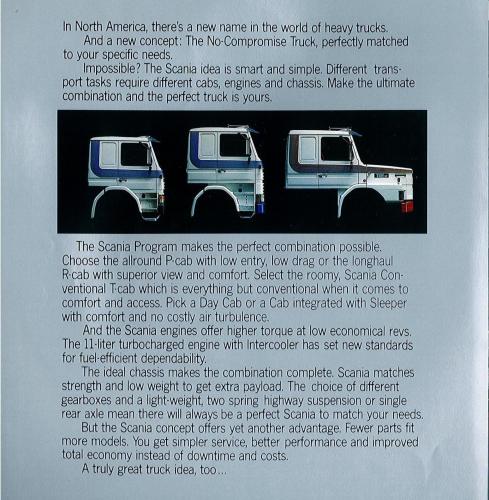
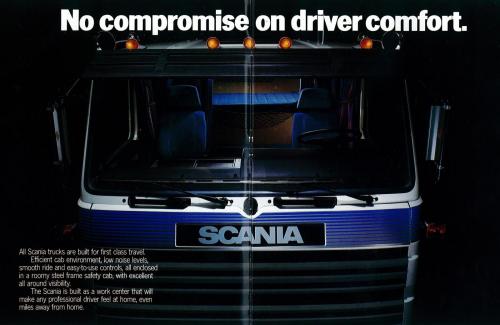
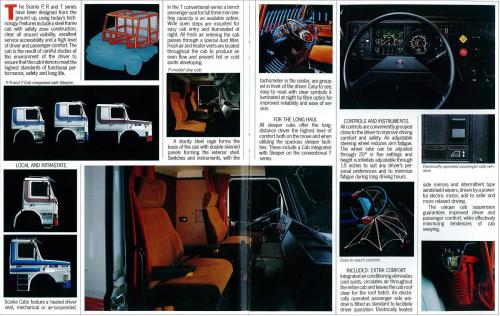
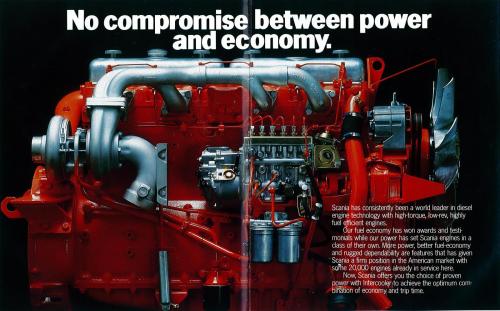
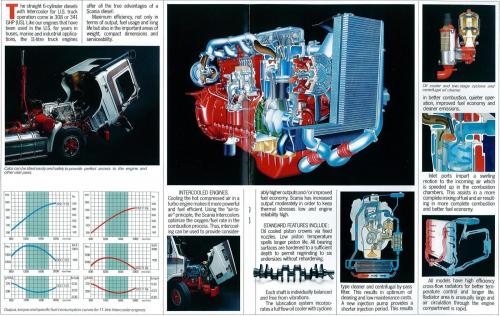
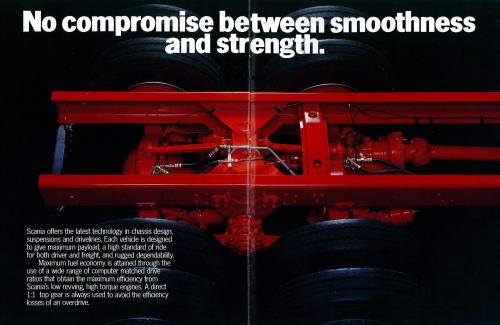
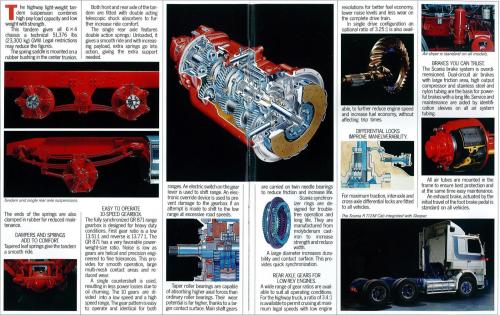
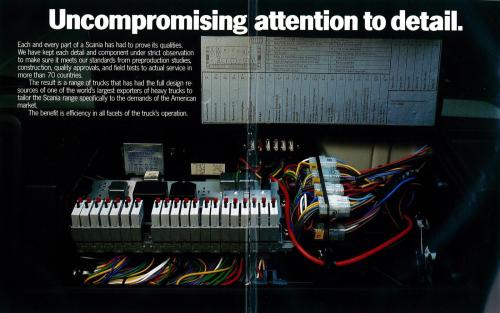
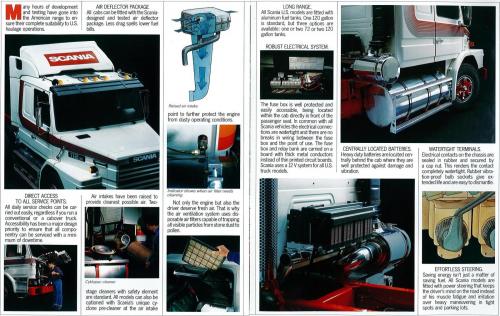
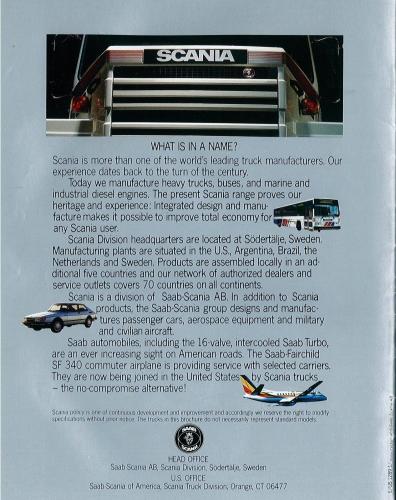
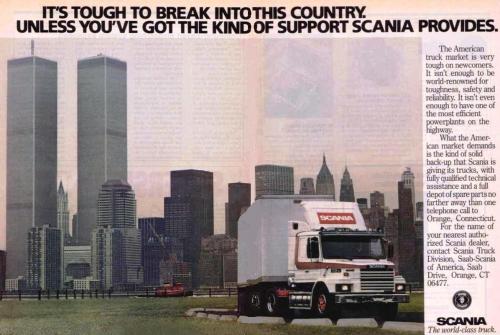
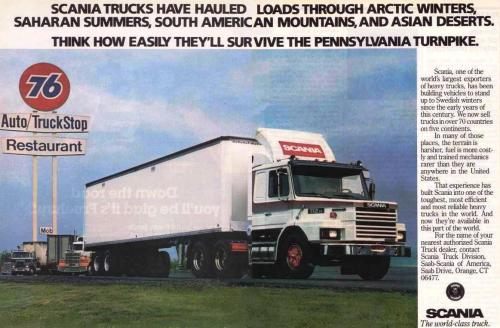
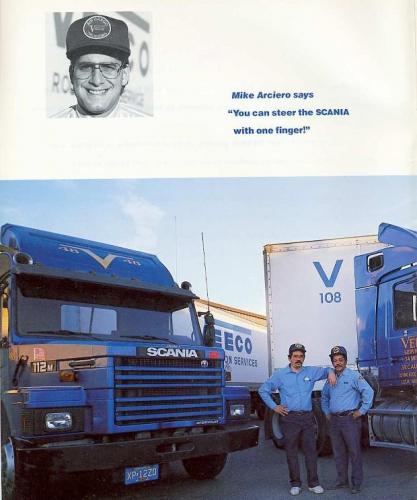
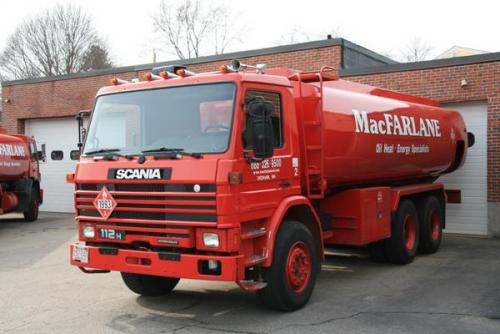
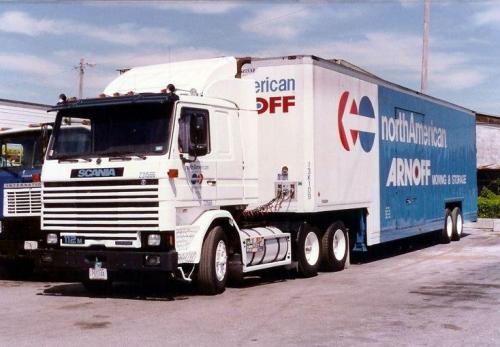
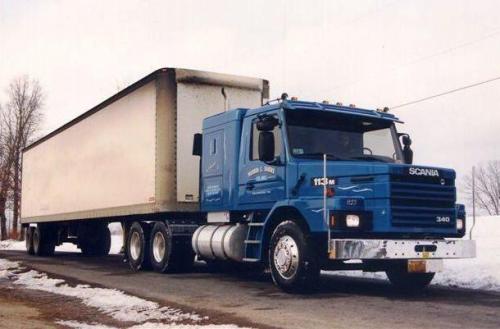
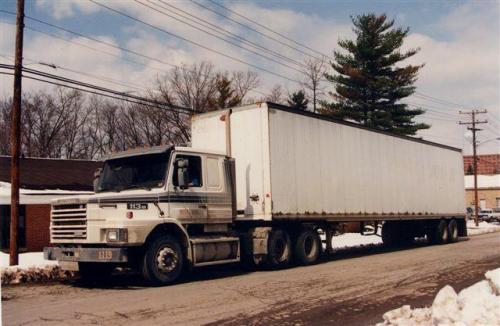
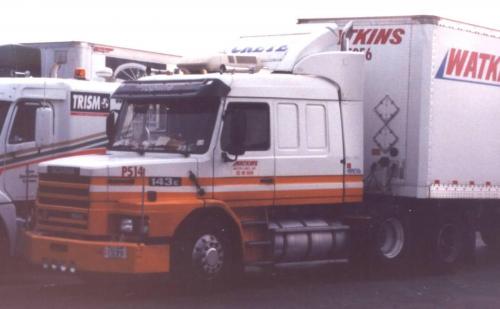
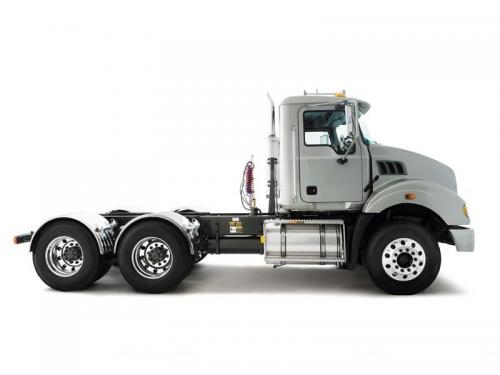
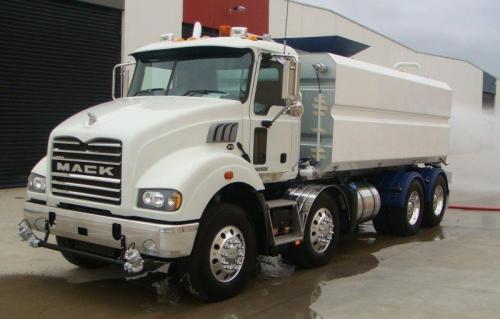
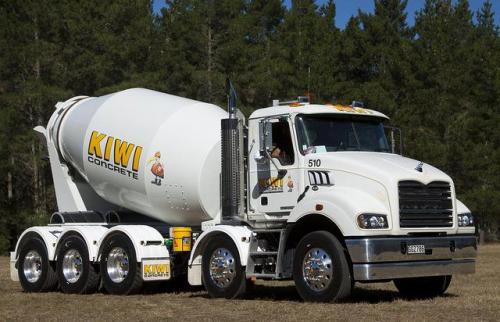
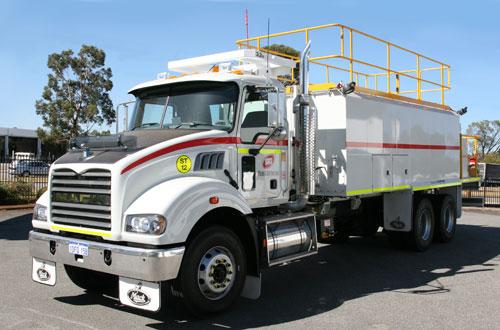
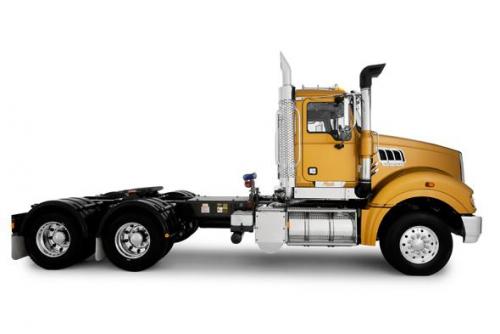
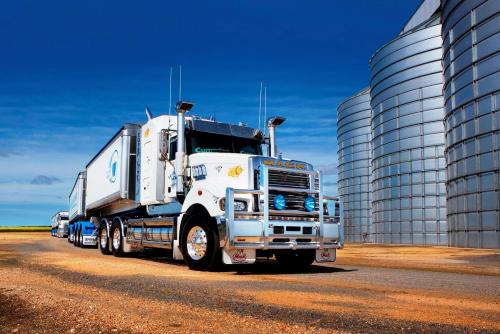
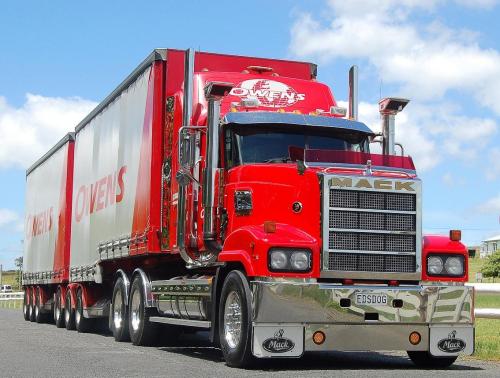
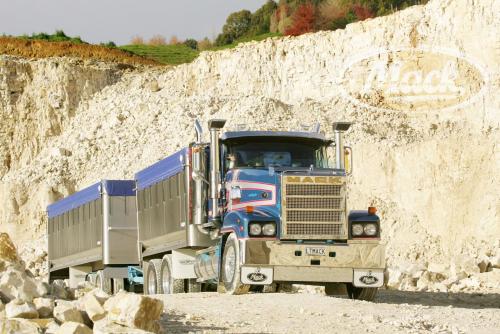
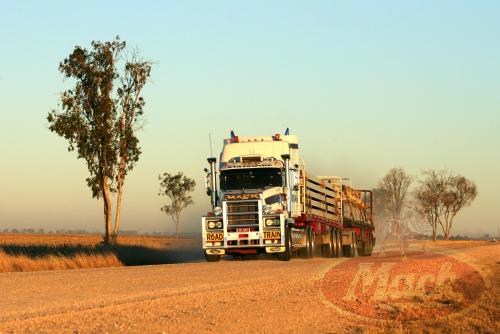
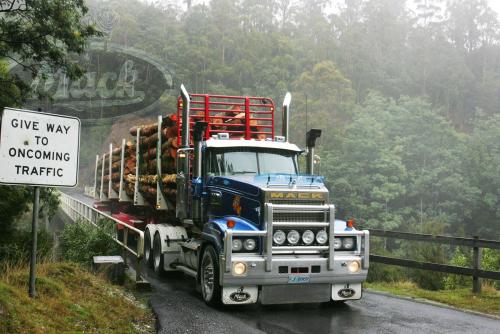
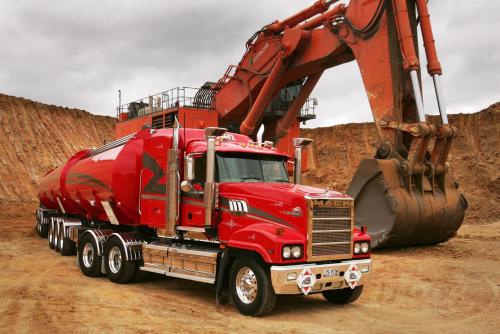
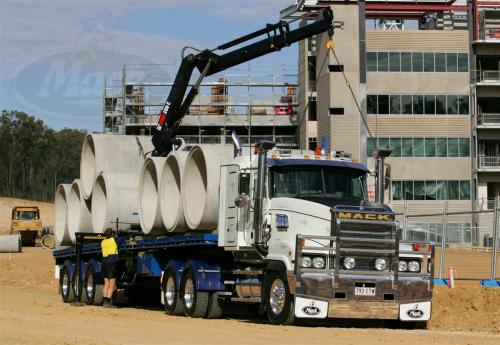
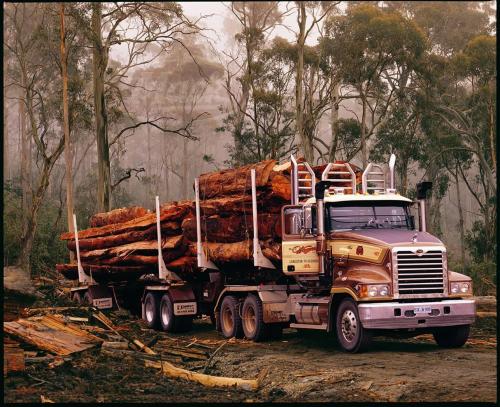
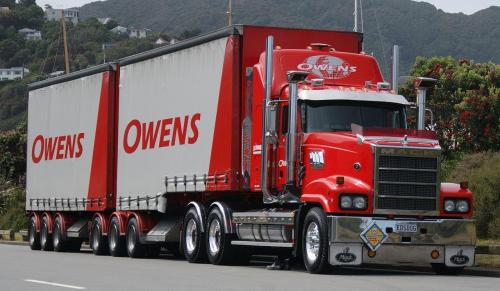
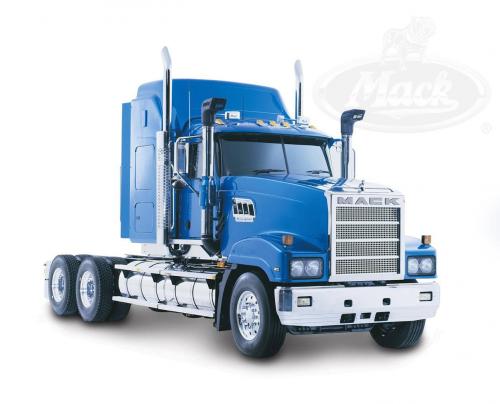
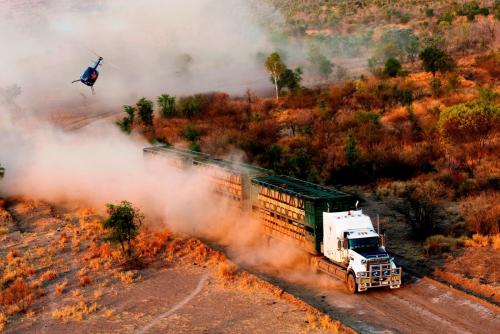
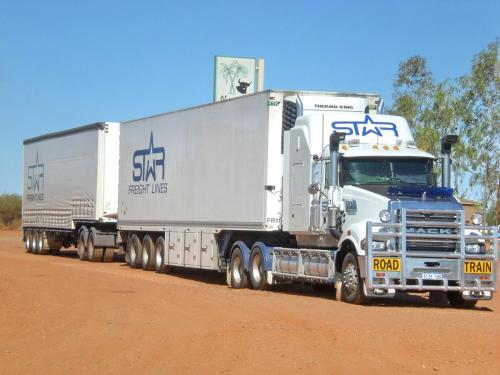
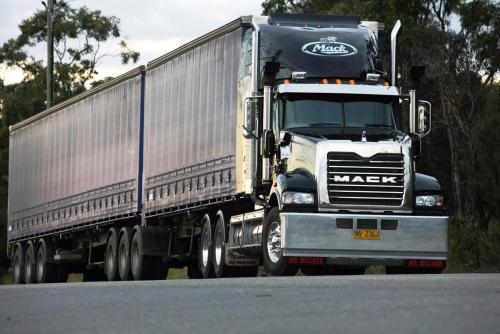
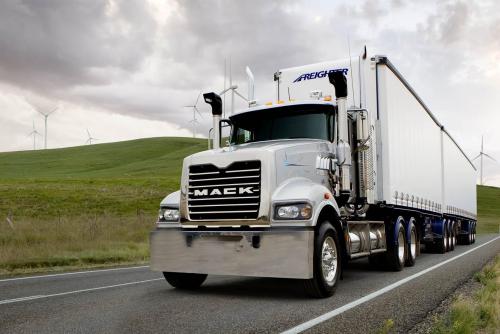
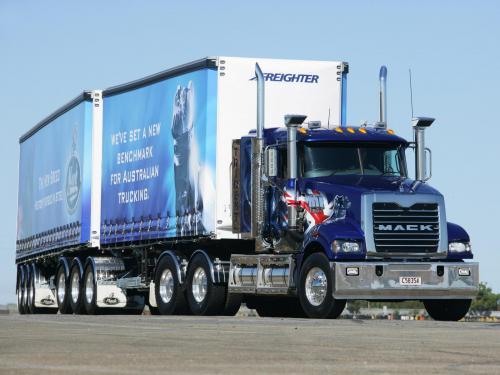
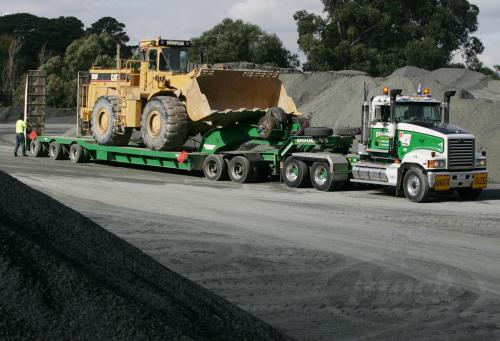
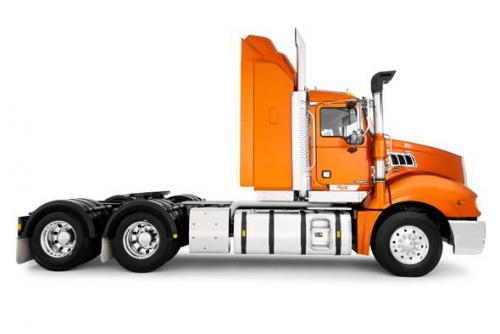
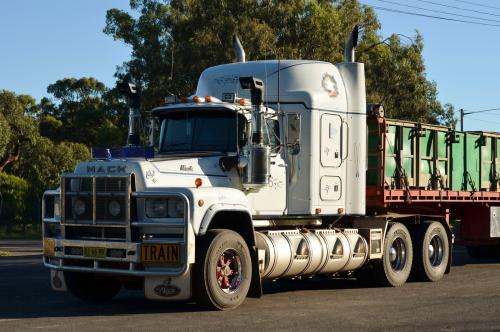
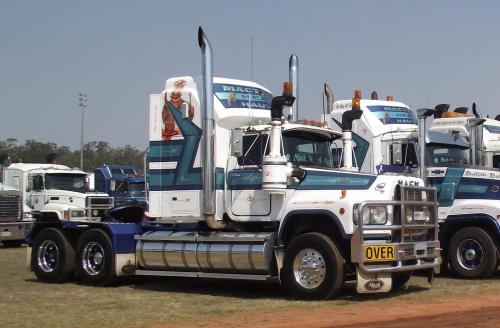
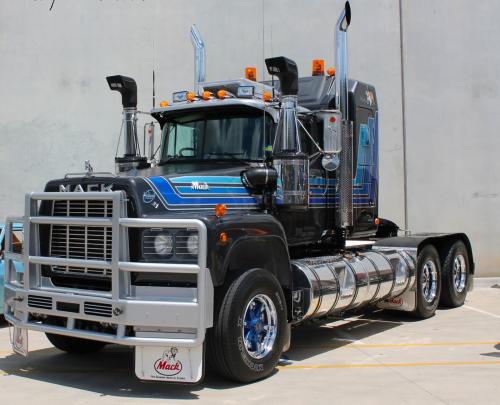
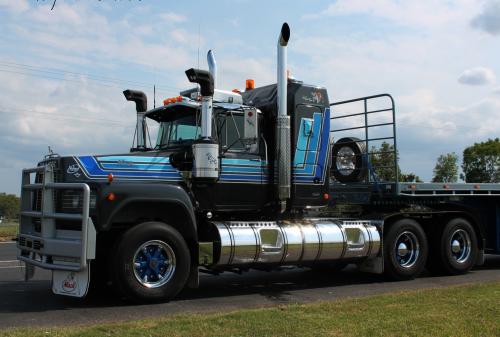
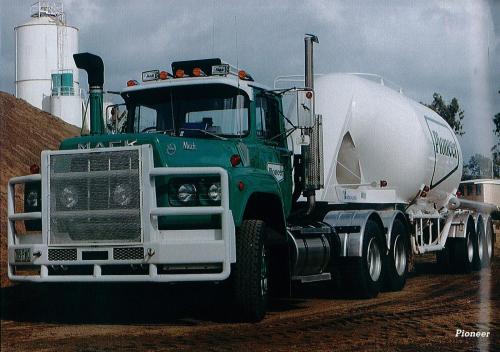
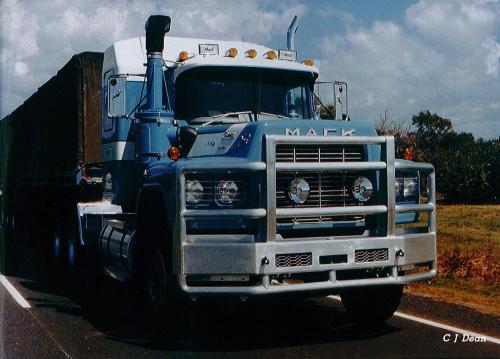
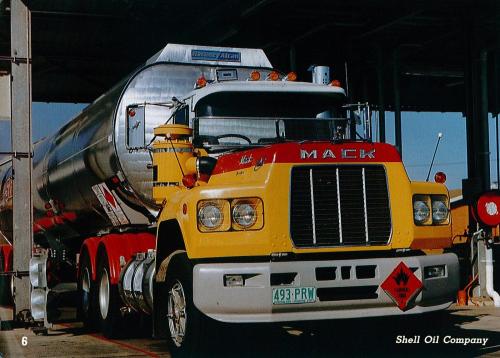
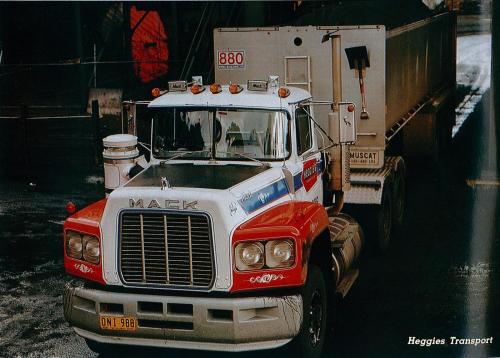
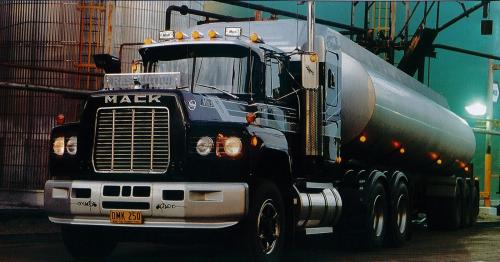
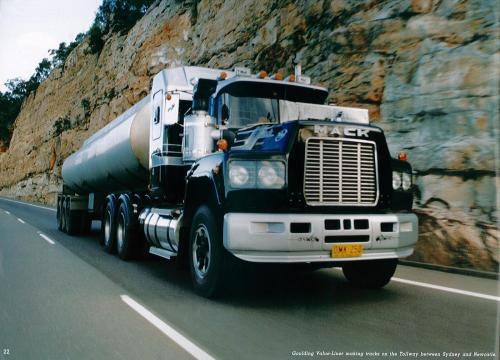
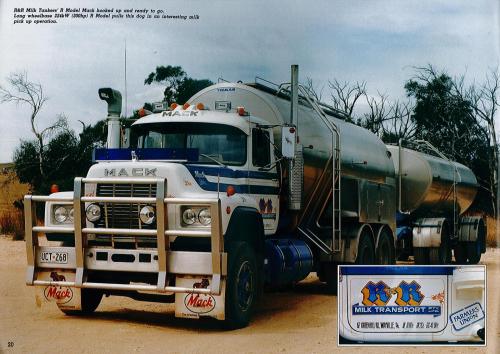
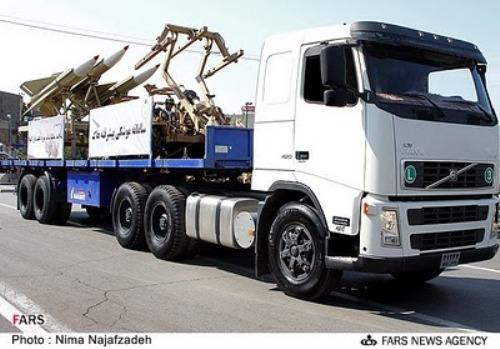
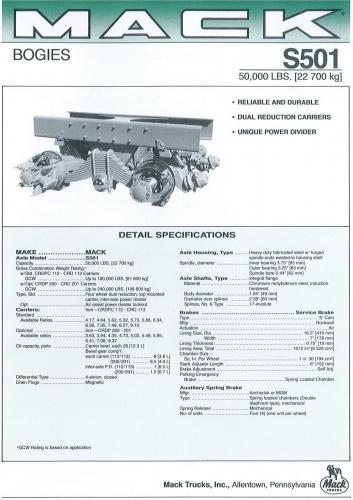
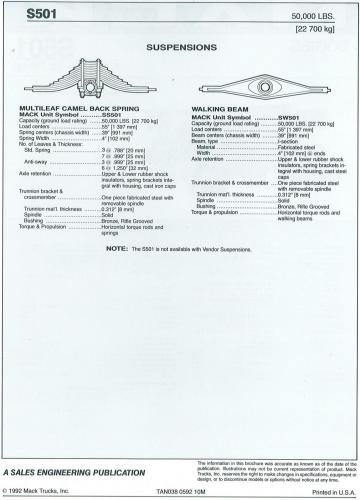
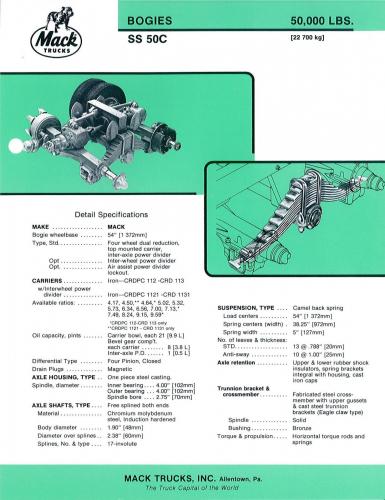
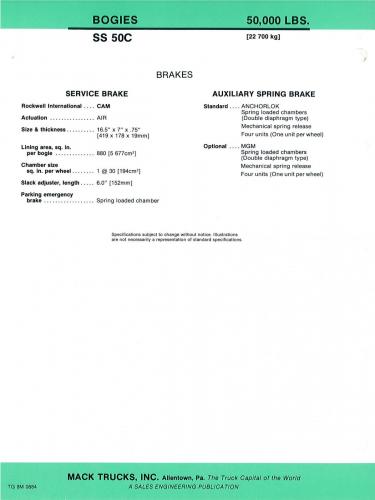

When Scania trucks roamed North America
in Other Truck Makes
Posted
Mack sold Caterpillar 3208-powered DM-492S 6x4 chassis to the U.S. Air Force for fuel trucks. That's the engine they wanted. And because the rear axle ratio was spec'd low (high numerically), it all worked out. In the application for which it was intended, the turbocharged Scania DS8 was a great engine. Trucks have to be spec'd right for the application.
The normally aspirated 140 horsepower END475 goes back a long time to the launch of the MB in the early 1960s. That engine was replaced by the turbocharged ET477 and ETZ477B, and finally the E4-210 (in the 1980s).
Scania-Vabis-powered models were designated Mack 400 series (e.g. R-487P).
The non-turbo 140hp END475 was the Scania D8. The turbocharged ENDT475 and subsequent ET477 and E4-210 were the Scania DS8.